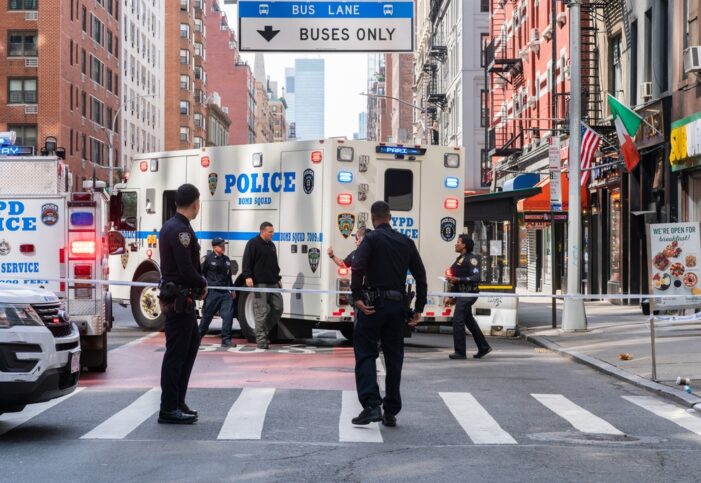Listen to a special podcast
Article: By Samantha Max, Gothamist.com
Police found a weapon in about one out of six pedestrian stops last year and found a firearm in about one out of 13 stops, a Gothamist analysis of NYPD data shows. The majority of stops resulted in no arrest or summons.
This as pedestrian stops increased about 70% during Mayor Eric Adams’ and NYPD Commissioner Keechant Sewell’s first year at the helm, according to NYPD data. In 2021 there were fewer than 9,000 stops; in 2022, more than 15,000.
That’s still far below the number of pedestrian stops conducted during former Mayor Michael Bloomberg’s administration, when, in 2011, pedestrian stops peaked at more than 685,000.
The numbers come from the NYPD’s annual publication of its stop, question and frisk database, which provides detailed information on each recorded pedestrian stop conducted by police in a given year — from the location of the stop to the number of minutes it lasted. The granular data exposes trends in the department’s use of the controversial tactic, which police claim is an essential law enforcement tool and advocates say is ineffective and targets people of color.
But Adams — who as a state senator helped to expose stop and frisk’s disproportionate impact on people of color — has defended the tactic as mayor, saying that it can help to get firearms off the streets if used lawfully.
“We want officers to use every tool that’s available within the law to go after those who are carrying guns,” he said at a press conference last July.
Under Adams’ and Sewell’s leadership, the share of stops that officers initiated on their own — as opposed to responding to a 911 call — has also increased, from about 23% of reported stops in 2021 to about 35% of reported stops in 2022. That means officers are being more proactive. Adams has made proactive policing a core tenet of his public safety platform – an approach he says improves public safety, and critics say leads to overly aggressive and racially biased law enforcement.
The mayor said in a statement that he knows “firsthand what it means to be a Black man on the receiving end of police abuse.”
“The men and women that wear blue have a sworn obligation to serve and protect the public,” he said. “I will both support our police officers who will help make our city safe again and hold zero tolerance for those who violate that sacred obligation.”
A police spokesperson said in a statement that officers are expected to follow the law and that the NYPD has training, supervision and oversight measures in place to ensure officers comply with policy. The department also disputed that race plays a role in its work.
“Being observant, curious, and speaking with civilians to inquire about street circumstances are longstanding, fundamental tools of policing and hew with the NYPD’s ongoing mission to listen carefully to local neighborhood concerns in all corners of New York City,” a police spokesperson said.
The New York Civil Liberties Union, which sued the NYPD for access to the data in 2012, is conducting its own analysis of the latest numbers. The organization is looking for patterns of potential racial profiling — particularly in individual precincts — and the use of force during pedestrian stops.
“Past administrations have always tried to justify heightened stop and frisk as an anti-crime measure,” said NYCLU Legal Director Chris Dunn. “We now know from 20 years of data that stopping more people does almost nothing to identify criminal behavior.”
Dunn also said the numbers likely tell only a portion of the story. A federal monitor that has overseen the NYPD’s use of stop and frisk for the past decade found that officers were not reporting all their stops in 2020 and 2021.
Keith Ross, a professor at John Jay College of Criminal Justice who spent about half of his 21 years with the NYPD working in the training academy, said pedestrian stops can be effective if officers are able to articulate why they think someone is breaking the law. But he warned against measuring officers’ productivity based on the number of stops they make.
That, he said, is when “we get into trouble.”
Earlier this year, the NYPD released data on traffic stops for the first time, in response to a new local law requiring the department to track its use of the tactic. That data revealed that police stopped more than 670,000 drivers in 2022 — about 90% of whom were Black or Latino.

